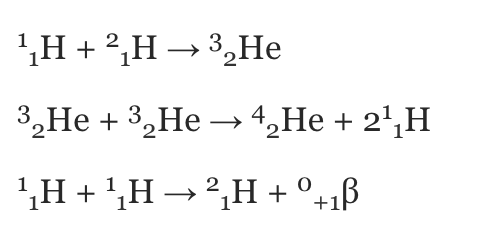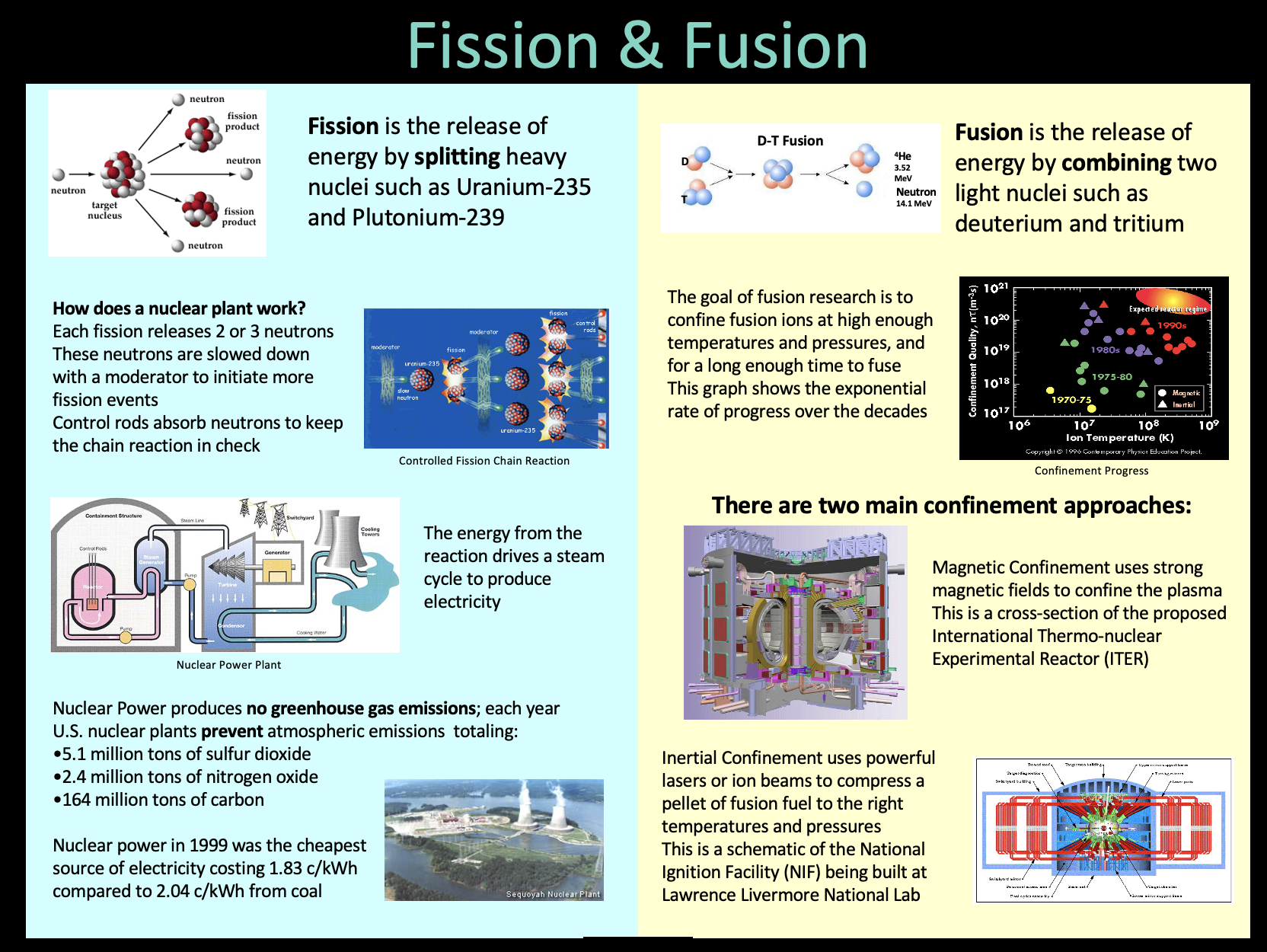go back
Nuclear Fission
- Nucleus of an atom is bombarded with neutrons to split the heavier nucleus into smaller and lighter nuclei
- This makes the nucleus so unstable that it splits into 2
- A lot of energy is released
- Occur artificially
- Little energy is required to split an atom
- Atomic bomb is based on concept of nuclear fission
- Often involves releases of gamma rays and free neutrons
01n+92235U−>56141Ba+3692Kr+301n
Nuclear Fusion
- 2 or more lighter nuclei combine to form a heavier nucleus
- An enormous amount of energy is released, much larger than nuclear fission
- Occurs in stars and the sun
- Huge amount of energy is required to bring 2 atoms together
- Therefore, happens in very, very hot conditions
- Cold fusion is a concept that entails nuclear fusion happening at room temperature
- Hydrogen bomb is based on concept of nuclear fusion
- Usually releases neutrons or protons as well as new nucleus


- Strong magnetic field is required for magnetic confinement
- Ensures plasma doesn’t escape
- Confinement ensures that fusion occurs, and makes it safe
Mass defect
- The total mass of a stable nucleus is always less than the combined masses of the nucleons
- Mass defect: difference between total mass of the individual nucleons, and the mass of the nucleus as a whole
- The difference in mass is considered to be the binding energy of the nucleus
- We can calculate the energy through e=mc2
- e = energy in J
- m = mass in kg
- c = speed of light, or 300 000 000 m/s
Binding Energy
- The difference in mass (mass defect) is considered to be binding energy
- If the mass of 4He was equal to the mass of 2 protons + 2 neutrons, the nucleus would fall apart without any input of energy
- To be stable, its mass must be less than that of its constituents combined
- The nuclear binding energy represents the amount of energy that must be put into a nucleus to break it apart into its individual nucleons
Nuclear Energy
- Element is bombarded with neutrons
- Neutrons are absorbed
- Nucleus becomes unstable and splits into smaller nuclei, radioactive energy and lone neutrons

